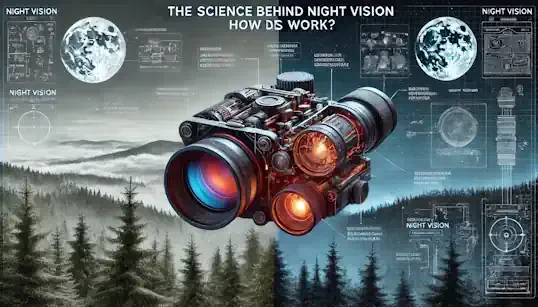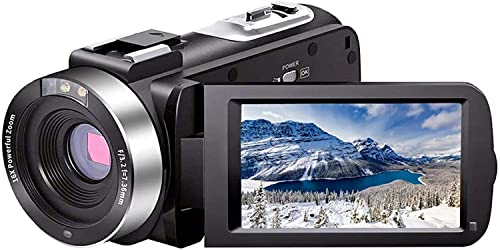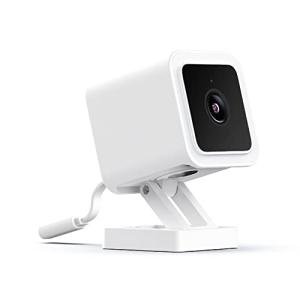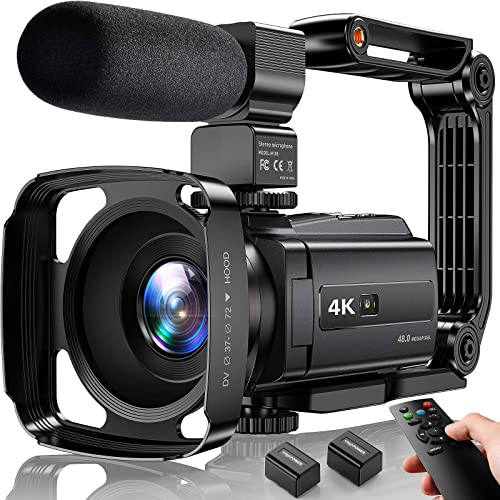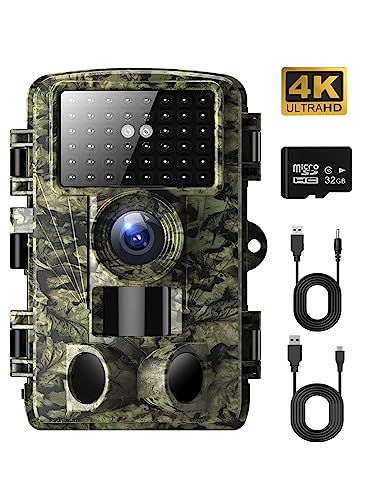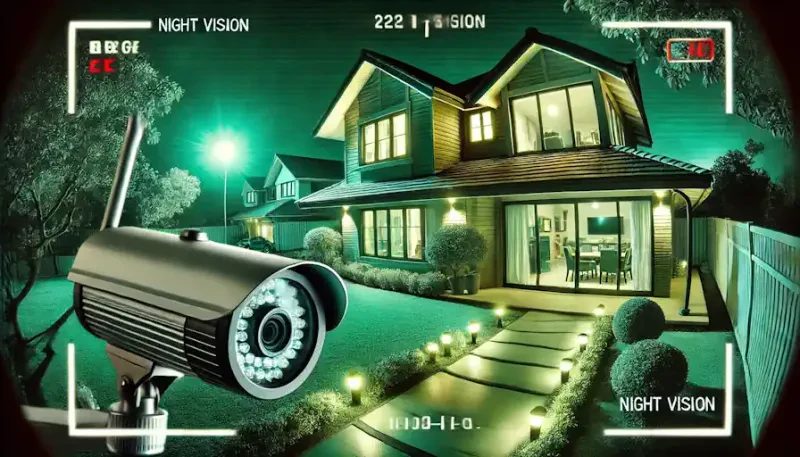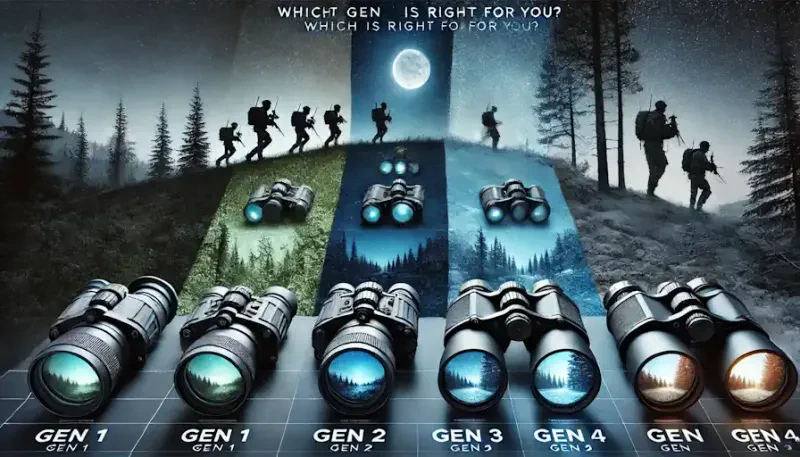The inky blackness of a moonless night has always presented a fundamental challenge to human perception. Our eyes, remarkable as they are, are simply not designed to operate effectively in the absence of light. For centuries, we have relied on artificial illumination – fires, torches, lanterns, and eventually, electric lights – to pierce the darkness. But what if we could see, not by creating light, but by amplifying the faint, invisible light that already exists? This is the promise and the scientific marvel of night vision technology. This article delves deep into the fascinating science behind night vision, focusing primarily on the dominant technology of image intensification. We'll explore the electromagnetic spectrum, dissect the intricate stages of image intensification, differentiate between various types and generations of night vision, and discuss the inherent limitations of this remarkable technology.
To truly understand how night vision works, we must first grasp the nature of light itself. Light is a form of electromagnetic radiation, and it exists on a vast spectrum known as the electromagnetic spectrum. This spectrum encompasses a wide range of wavelengths, from extremely short gamma rays to extremely long radio waves. Each wavelength corresponds to a different type of electromagnetic radiation, each with its own unique properties.
Our eyes are only sensitive to a tiny sliver of this spectrum, a range we call "visible light." This narrow band of wavelengths, ranging from approximately 400 to 700 nanometers (nm), is what allows us to perceive the world in color. Different wavelengths within this visible range correspond to different colors; shorter wavelengths appear violet and blue, while longer wavelengths appear red and orange.
Beyond the red end of the visible spectrum lies infrared (IR) light. Infrared light has longer wavelengths than visible light, ranging from about 700 nm to 1 millimeter. This means that infrared light is invisible to the human eye. We perceive infrared radiation as heat, but we cannot see it. Within the infrared region, there are further subdivisions. Near-infrared (NIR) is the portion of the infrared spectrum closest to visible light, ranging from roughly 700 nm to 2500 nm. Far-infrared, on the other hand, has much longer wavelengths and is closer to the microwave region of the spectrum.
It's crucial to understand the electromagnetic spectrum because night vision technology, particularly image intensification, relies on detecting and manipulating light that falls outside the range of human vision, primarily near-infrared light. By capturing and amplifying this invisible light, night vision devices effectively extend our vision beyond its natural limitations.
Image intensification is the most prevalent type of night vision technology. Unlike thermal imaging, which detects heat signatures, image intensification works by amplifying existing ambient light, however faint it may be. Even on a seemingly pitch-black night, there is always some light present – starlight, moonlight, the distant glow of city lights, or even the faint infrared emission from objects themselves. Image intensification devices take this incredibly weak light and multiply it many thousands of times, creating a visible image.
The magic of image intensification happens within a specialized component called an image intensifier tube. This tube contains several key elements that work in concert to amplify light and produce a visible image. These core components are the objective lens, the photocathode, the microchannel plate (MCP), the phosphor screen, and the eyepiece.
The process begins with the objective lens, which is similar to a camera lens. Its primary function is to gather the available ambient light from the scene. The quality of the objective lens, including its aperture size (which determines how much light it can collect) and its optical coatings, plays a significant role in the overall performance of the night vision device. A larger aperture and high-quality lens will gather more light, resulting in a brighter and clearer image.
The light collected by the objective lens then passes through to the photocathode. This is a light-sensitive surface that performs the crucial first step in the image intensification process: converting photons (particles of light) into electrons. This conversion is based on a fundamental principle of physics known as the photoelectric effect. When photons strike the photocathode, they transfer their energy to electrons within the photocathode material. This energy boost allows the electrons to escape from the surface of the photocathode, becoming free electrons.
Different materials have different sensitivities to light, and the choice of photocathode material significantly impacts the performance of the night vision device. Early night vision devices used photocathodes made from materials like S-20 or S-25, which had relatively low sensitivity. Modern, high-performance devices use photocathodes made from gallium arsenide (GaAs), which is much more sensitive to near-infrared light, resulting in a brighter and clearer image, especially in very low-light conditions.
The electrons emitted from the photocathode then encounter the true heart of the image intensification process: the Microchannel Plate (MCP). The MCP is a thin, disc-shaped component, typically about 1 millimeter thick, containing millions of tiny, microscopic channels. These channels are typically made of glass and are coated with a special material that exhibits a property called secondary electron emission.
When an electron from the photocathode enters one of these channels, it collides with the channel wall. This collision causes the release of multiple additional electrons from the channel wall material. These newly released electrons are then accelerated down the channel by an applied voltage, colliding with the walls again and again. Each collision releases even more electrons, creating a cascading effect. This process of secondary electron emission and cascading multiplication results in a dramatic amplification of the original electron signal. A single electron entering the MCP can be multiplied into thousands, or even tens of thousands, of electrons by the time it exits the channel. The degree of amplification, known as the MCP gain, is a critical factor in the overall performance of the night vision device.
The amplified electrons, now numbering in the thousands or tens of thousands for each original electron, then exit the MCP and strike a phosphor screen. This screen is coated with a phosphor material, which has the property of emitting light when struck by electrons – a phenomenon known as phosphorescence. As the multitude of electrons slam into the phosphor screen, it glows, creating a visible image that corresponds to the original scene, but now vastly brighter.
The most common phosphor used in night vision devices is P43, which emits green light. This choice is not arbitrary. The human eye is most sensitive to green light, allowing us to perceive more detail and contrast in the image. Green light is also less fatiguing to look at for extended periods compared to other colors. Other phosphors, such as white phosphor (P45), are also used, offering a more natural-looking image, although sometimes with a slight trade-off in contrast.
Finally, the user looks through an eyepiece, which is essentially a magnifying lens system. The eyepiece allows the user to view the intensified image on the phosphor screen comfortably. It typically includes a diopter adjustment, which allows the user to focus the image to their individual eyesight, ensuring a sharp and clear view.
The evolution of image intensifier tube technology has been marked by significant advancements, categorized into distinct "generations." Each generation represents a leap forward in performance, primarily due to improvements in the photocathode and the MCP.
Generation 0 (Gen 0) represents the very earliest night vision systems, developed in the mid-20th century. These systems were not truly image intensifiers in the modern sense. They relied on "active" infrared illumination, meaning they used an infrared illuminator (like an infrared spotlight) to project infrared light onto the scene. The reflected infrared light was then detected by a specialized receiver. Gen 0 systems were bulky, had a very short range, and were easily detected by anyone else using a similar device, making them impractical for many applications.
Generation 1 (Gen 1) marked the introduction of the first true image intensifier tubes. These tubes used a basic photocathode (typically S-20 or similar) and a simple electron amplification stage, but without a Microchannel Plate. While Gen 1 devices provided a significant improvement over Gen 0, they still suffered from several limitations. They had relatively low gain (light amplification), resulting in a dimmer image. They exhibited significant image distortion, particularly around the edges (often described as a "fish-eye" effect). Their lifespan was relatively short, and they required a significant amount of ambient light to produce a usable image.
Generation 2 (Gen 2) revolutionized night vision technology with the crucial addition of the Microchannel Plate (MCP). The MCP, as described earlier, dramatically increased the electron amplification, resulting in a much brighter and clearer image. Gen 2 devices also typically used improved photocathode materials, further enhancing their sensitivity. The benefits of Gen 2 over Gen 1 were substantial: higher gain, better resolution, reduced distortion, and a longer lifespan. Within Gen 2, there are further variations, such as Gen 2+ and SuperGen, which represent incremental improvements in performance.
Generation 3 (Gen 3) represents the current state-of-the-art for many professional applications, including military and law enforcement. The key advancement in Gen 3 is the use of a gallium arsenide (GaAs) photocathode. GaAs is significantly more sensitive to near-infrared light than the photocathodes used in previous generations. This increased sensitivity allows Gen 3 devices to operate effectively in extremely low-light conditions, producing a brighter and clearer image with less noise. Many Gen 3 tubes also incorporate an ion barrier film on the MCP. This film protects the MCP from damage caused by positive ions, extending the lifespan of the tube and further reducing image noise. Another significant advancement often found in Gen 3 devices is "autogating." Autogating is a feature that rapidly adjusts the voltage applied to the MCP to prevent bright light sources from overloading the tube and causing blooming or damage. This allows Gen 3 devices to operate more effectively in dynamic lighting conditions, such as urban environments with streetlights or car headlights. Gen 3 offers the highest gain, best resolution, longest lifespan, and superior performance in extremely low light.
The term "Generation 4" (Gen 4) is often used, but it's not an officially recognized or standardized term. What is often called "Gen 4" typically refers to night vision devices that have the ion barrier film on the MCP either removed or significantly thinned. This is also known as "unfilmed" or "filmless" night vision. Removing the film increases the sensitivity of the MCP even further, allowing for even better performance in extremely low light. However, this increased sensitivity can come at the cost of a shorter lifespan, as the MCP is more susceptible to damage without the protective film.
Digital night vision represents a different approach to seeing in the dark. Instead of using an image intensifier tube, digital night vision devices employ a CMOS (Complementary Metal-Oxide-Semiconductor) sensor, similar to the sensors found in digital cameras. Light entering the objective lens is focused onto the CMOS sensor. The sensor converts the light into a digital signal, which is then processed and enhanced by an internal processor. The processed image is then displayed on a small LCD screen within the device, which the user views through an eyepiece.
Digital night vision offers several potential advantages. It can be less expensive to manufacture than high-end image intensifier tubes, making it more accessible to consumers. Digital devices often include features that are difficult or impossible to implement with traditional tube-based night vision, such as video recording, digital zoom, different color palettes (allowing for color night vision in some cases), and the ability to display information overlays (like compass readings or GPS coordinates). They are also generally less susceptible to damage from bright light sources.
However, digital night vision also has some drawbacks, particularly when compared to high-end Gen 3 image intensifier tubes. In extremely low-light conditions, Gen 3 tubes generally still outperform digital night vision in terms of raw sensitivity and image clarity. The image produced by digital night vision can sometimes appear more "digital" or "pixelated," especially at higher zoom levels. There can also be a slight latency (delay) between what's happening in real-time and what's displayed on the screen, which can be a disadvantage in dynamic situations. Digital night vision, is however, rapidly improving.
Thermal imaging is a fundamentally different technology from image intensification. While image intensification amplifies existing light, thermal imaging detects heat. All objects emit infrared radiation as heat, and the amount of radiation emitted is directly related to the object's temperature. Thermal imagers, therefore, don't "see" reflected light; they "see" temperature differences.
A thermal imager uses a specialized lens to focus the infrared radiation emitted by objects onto an infrared detector. This detector is composed of an array of tiny sensors, each of which is sensitive to infrared radiation. The detector creates a "thermogram," which is essentially a heat map of the scene. This thermogram is then processed and converted into a visible image, where different colors or shades of gray represent different temperatures. Hotter objects typically appear brighter or in warmer colors (like red or yellow), while cooler objects appear darker or in cooler colors (like blue or black).
Thermal imaging has significant advantages. It works in complete darkness, as it doesn't rely on any ambient light. It can also "see" through obscurants like smoke, fog, and light foliage (to a certain extent), as these materials don't completely block infrared radiation in the same way they block visible light.
However, thermal imaging also has limitations. The resolution of thermal images is generally lower than that of image intensification devices, resulting in a less detailed picture. Thermal imaging primarily shows temperature differences; it doesn't show details that aren't related to temperature, such as textures or written text. Reflective surfaces, like glass, can also be problematic, as they tend to reflect the thermal signature of the surrounding environment rather than allowing the imager to "see" through them. While thermal imaging excels at detecting living beings and operating in complete darkness, it's less suited for situations requiring high resolution and detail recognition of inanimate objects based solely on visible-light features.
Even the most advanced night vision technology has inherent limitations. It's crucial to understand these limitations to use night vision devices effectively and safely.
Image intensification, as we've emphasized, requires some ambient light to work. While Gen 3 devices can operate in extremely low-light conditions, they cannot function in absolute, total darkness. In a completely sealed room with no light sources whatsoever, an image intensifier will not produce an image. This is why some night vision devices include built-in infrared (IR) illuminators, which act like invisible flashlights, providing a source of near-infrared light to illuminate the scene.
Bright light sources can cause "blooming" or "halo" effects in night vision devices. Blooming is a bright, washed-out area around a light source, obscuring details in that region. Halos are rings of light that appear around bright objects. These effects are caused by the intense light overloading the image intensifier tube. While higher-generation devices, particularly those with autogating, are more resistant to blooming and halos, they can still occur in extreme cases.
Image intensifiers can exhibit various forms of distortion. Pincushion distortion makes straight lines appear to curve inward, toward the center of the image. Barrel distortion makes straight lines appear to curve outward, away from the center. Shear distortion is a more complex distortion where the image appears to be "torn" or shifted. These distortions are more common in lower-generation devices.
Monocular night vision devices (those with a single eyepiece) can affect depth perception. Because you're only viewing the scene through one eye, your brain receives less information about the relative distances of objects. This can make it difficult to judge distances accurately, which is important to consider when navigating or performing tasks that require precise depth perception. Binocular night vision devices (with two eyepieces) provide a more natural and accurate sense of depth perception, as they present a slightly different image to each eye, mimicking normal binocular vision.
Weather conditions can significantly impact the performance of night vision devices. Fog, rain, and snow can scatter light, reducing the effectiveness of both ambient light and IR illumination. This scattering reduces the range and clarity of the image, making it harder to see.
While night vision devices can greatly extend your vision in darkness, they have finite range limitations. The effective range is influenced by factors such as the generation of the device, the quality of the optics, the amount of ambient light, and the weather conditions.
Understanding the key specifications and terminology used to describe night vision devices is essential for making informed comparisons and choosing the right equipment.
Gain refers to the amount of light amplification provided by the image intensifier tube. It's a measure of how much brighter the output image is compared to the input light. Higher gain generally means a brighter image, but it can also amplify noise.
Resolution refers to the sharpness and detail of the image. It's typically measured in line pairs per millimeter (lp/mm). Higher resolution means the device can resolve finer details.
Signal-to-Noise Ratio (SNR) is a crucial measure of image quality. It represents the ratio of the desired signal (the light from the scene) to the background noise (random fluctuations in the image). A higher SNR indicates a cleaner image with less noise, making it easier to discern faint objects.
Photocathode Sensitivity refers to the ability of the photocathode to convert photons into electrons. It's typically measured in microamperes per lumen (µA/lm). Higher sensitivity means the photocathode is more efficient at converting light into electrons, resulting in better low-light performance.
Figure of Merit (FOM) is a combined measure of resolution and SNR, often used to provide a single number that represents the overall performance of a night vision device. A higher FOM generally indicates better performance.
Lux is unit to express levels of illuminance.
The applications of night vision technology are incredibly diverse, extending far beyond its military origins. In military and law enforcement, night vision is a critical tool for surveillance, reconnaissance, target acquisition, and navigation in low-light and no-light conditions. Security and surveillance professionals rely on night vision cameras to monitor properties, detect intruders, and gather evidence.
Wildlife observation is another significant application. Night vision allows researchers and enthusiasts to study nocturnal animals without disturbing their natural behavior with artificial light. Hunters, in jurisdictions where it's legal, use night vision devices to track and hunt game animals at night. It is critical to always be aware of, and follow local regulations.
Night vision is also used for navigation, particularly in boating and, in some cases, driving. Specialized night vision devices can help boaters avoid obstacles and navigate safely in darkness. Some high-end vehicles are equipped with night vision systems that assist drivers in detecting pedestrians, animals, or other hazards on the road.
Search and rescue operations often benefit from night vision, allowing rescuers to locate missing persons in darkness or adverse weather conditions. Astronomers, use night vision to enhance their observations of the faint objects in the night sky.
Night vision technology, a testament to human ingenuity, has fundamentally transformed our ability to interact with the world after dark. By harnessing the principles of physics, specifically the manipulation of light beyond the visible spectrum, night vision devices allow us to see what would otherwise remain hidden. Understanding the scientific intricacies of image intensification, the different generations of technology, and the inherent limitations is crucial for appreciating the capabilities and making informed choices about night vision equipment.
The ongoing advancements in night vision technology continue to push the boundaries of what's possible. Researchers are constantly working to improve photocathode sensitivity, increase MCP gain, reduce noise, and enhance resolution. The development of new materials and manufacturing techniques is leading to even more powerful and efficient night vision devices. Digital night vision technology is also rapidly evolving, with improvements in sensor technology and image processing algorithms closing the gap with traditional image intensifier tubes. The future of night vision likely holds even more sophisticated capabilities, perhaps incorporating features like augmented reality overlays, improved image stabilization, and even fusion with other sensor technologies, such as thermal imaging.
From military operations and law enforcement to wildlife observation and home security, night vision has revolutionized a wide range of fields. It has empowered soldiers and police officers to operate effectively in darkness, provided security professionals with enhanced surveillance capabilities, allowed researchers to study nocturnal animal behavior, and given homeowners a powerful tool for protecting their property. The ability to see in the dark is no longer a superpower confined to the realm of science fiction; it's a tangible reality, accessible through the marvel of night vision technology. Night vision truly illuminates the night, expanding our perception and allowing us to interact with the world in ways that were once unimaginable. As technology marches forward, the future promises even greater clarity, revealing further secrets of the unseen world around us.
